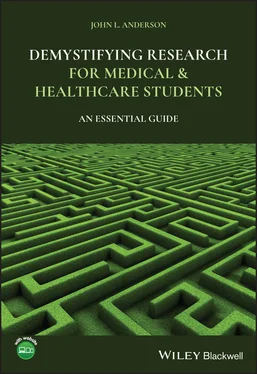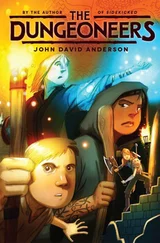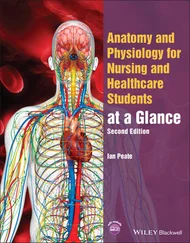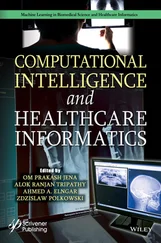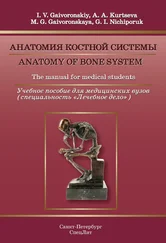It was more difficult not having access to the usual library facilities and so on. But I was able to locate most of the research papers I needed to cite, from home. I had to rest a lot more – one of the legacies of my stroke has been the fatigues and I have to lie down for a rest every couple of hours. But I got there. So, I guess I lost about four months' time from my writing and have had to hurry more that I would have liked to complete this project. Now let me say a bit more about what has driven me to teach as I have and to write this book.
I have felt proud to be a sociologist. My tuition at Aberdeen provided me with a particular world view which has allowed me to question orthodoxy, and inequalities. My only disappointment in Sociology and in my chosen branch of sociology – medical sociology – has been my peers who have tended to make so many of their activities pretty much obscure to non‐sociologists and therefore, with the jargon of the subject, this puts people off. I believe that every scientific discipline is guilty of that failing. In fact they tend to pride themselves in the elegance of their academic snobbery. The very fact that they engage in a language which the non‐expert audience can not access is partly what makes a profession different from all the others.
In my career – which began in survey research, then very quickly moved into teaching in medicine – I very soon learned that it was a fruitless endeavour to try to teach sociology to medical students in the same way as it is taught to sociologists. So, from the beginning, in 1973, when sociology was first introduced into the medical school as a formally‐taught, and examinable subject, I realised from the response of my students to the subject, that a large part of the challenge for me was to make my subject accessible to my students. It is a very lonely place, being a sole sociologist in a medical school. Not only were my students antagonistic about having to learn this subject, but the other staff in the medical school were mostly the same, and I believe, their antagonism fired the students' resentment. So reaching out to them was an essential process. I tried to make sociology both relevant and understandable for them.
When I joined the Brighton & Sussex Medical School Institute of Postgraduate Medicine (as it was then) in 2009, I was given the responsibility for teaching research methods and co‐ordinating the Dissertation Panel. All our Master's students had to complete the research methods module and every student had to complete a research dissertation. My goal was to make research methods as accessible to them as possible. I remember one of the first students I taught saying that the research methods module was known as ‘the killer’ because students had such difficulty with it. His class gave me one of the most positive reviews (feedback) that I have had. Over the last 11 years I have become better at it. I have supervised over 70 student's dissertations and I seem to have a knack of connecting with their uncertainties, identifying what they are trying to get at in their projects and putting them at their ease. I have learned something from all of them and have appreciated the enrichment they have brought into my life.
So, this book is mostly based upon my lectures and the research skills workshops I have taught. I thought it would be an easy job to translate my lecture‐notes into chapters, but it has been more work (interesting work) than I imagined. I still feel enthusiastic about research and slightly evangelical about promoting it. But I like to ensure that it makes sense and is not too over‐complicated. I hope my positive attitude (can do!) comes over in this book, and I hope that it will give heart to those of you who are anxious about doing research.
I apologise in advance for my little Anecdotes, most of which were edited out! I can't resist telling a story. I like to breath some life and humanity into the subject. I hope it helps break up the material and gives you something to smile about at times!
Many people have provided me with inspiration over the years, from my first boss Ann Cartwright (who I didn't get on with very much, but who I respected for her knowledge) right up to Seb, one of my students and now a colleague and a friend, who has impressed me with his appreciation of the subject, his insights and his energy! (You will meet him in several chapters.) Mick Bloor, a great friend and researcher of over 50 years (!) and whose work I cite constantly throughout this book is, to my mind, one of the world's best qualitative researchers. He has been a source of friendship, advice and support over the years. Too many others to mention have influenced me in so very many ways. I thank you all.
My wife Clair and our granddaughter Anna are my beloved angels. It is like having a constant source of love, respect and common‐sense surround me at all times. Clair has been so understanding and supportive throughout the process of writing this book. She keeps coming up with useful sources and new bits of information. Both she and Anna have read most of the chapters of the book and laughed at the right places. I am so proud of you both and love you so much.
Thank you.
John L. Anderson
January 2022
About the Companion Website
This book is accompanied by a companion website.
www.wiley.com/go/Anderson/DemystifyingResearch 
This website includes:
Lecture slides available to download in PowerPoint
CHAPTER 1 Introduction: What is ‘Research’?
The Aims of this Book
I have been teaching research methods to medical, nursing, and social sciences students, and in postgraduate medicine, for over 40 years. In that time, I have realised that the prospect of learning about doing research, or doing ‘science’, terrifies a lot of people. Many have a ‘mental block’ at the thought of it. ‘Research is what scientists do and I'm not a scientist!’ So, this is where I give my first, and possibly, most important piece of advice:
‘Don't Panic!’
Can you think of the source? These words were written by Douglas Adams in 1979 … That's right! They are from his book, The Hitch Hiker's Guide to the Galaxy, and on the back of the Guide are found these immortal words. Remember them. You don't need to panic when you are learning about research. You can do it.
My goal is to de‐mystify research. I aim to help you understand research, to be able to appraise research in scholarly articles, to be able to design a research project, and to believe that you could do research yourself. This book is not intended to impress my colleagues and bewilder students. I hope that, by explaining research in a straightforward and simple manner, I can make the process of learning about and understanding research easier. I shall try to explain jargon terms wherever possible and I shall use examples of classic research as well as some of my own and that of my students. (Over the past 10 years, I have supervised over 70 masters students' dissertations to completion.) I aim to illustrate the theoretical with examples of research in practice.
The other aspect of research which frightens the heck out of learners is … that's right – the ‘S’ word – statistics . Well, I guess I have to touch on the subject, but I shall leave it to those more able than myself to cover that subject in depth. I have included some parts on data analysis, but I shall try to make these as pain‐free and understandable as possible.
Читать дальше
